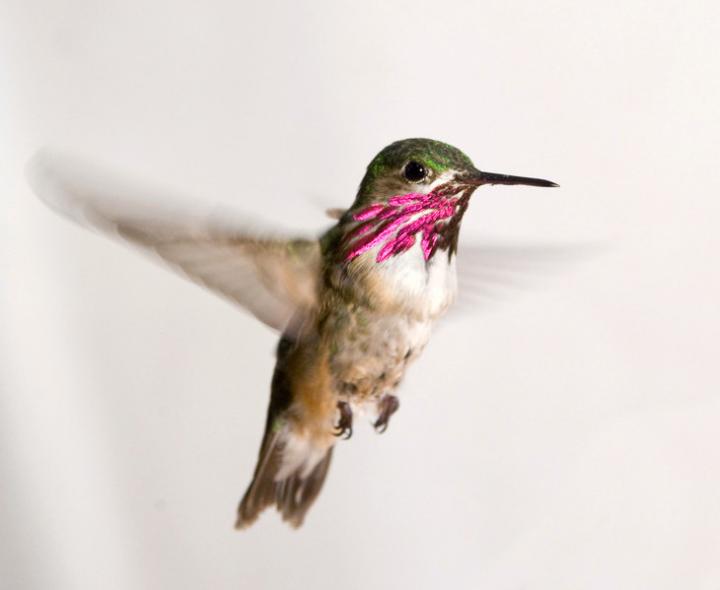
Credit: Todd Goodrich, University of Montana
The extraordinary ability of hummingbirds to perform complex escape maneuvers will be explored for its potential to enhance the field of robotics and micro aerial vehicles, thanks to a $923,483 grant from the Office of Naval Research.
Bo Cheng, assistant professor of mechanical engineering at Penn State, is leading the project to develop a holistic understanding of the bird’s maneuverability by working with biologists and fluid dynamicists, gaining new insights into the aerodynamics, perception, motion planning and control of hummingbird flight and applying the concepts to robotic systems.
“Hummingbirds are often considered as the most agile flying animal in the world,” Cheng said. “They fly like insects by flapping their wings back and forth, but they can do it much better than insects thanks to their more advanced brain and musculoskeletal systems.”
This project to understand the agility of hummingbirds will include teams from three universities: Penn State, Vanderbilt University and the University of Montana. Penn State is the lead of this project and will integrate the aspects of aerodynamics, biology and robotics, with a particular focus on perception, motion planning and control. The other teams will focus on the aerodynamics and biological aspects of hummingbird flight.
“The first challenge we face is how to integrate this knowledge in a framework to derive principles that can be translated to robotics,” Cheng said. “We have to synthesize different knowledges coming in from multidisciplinary teams. The second challenge is how should we design our experiment that can allow us to understand what the perception and control principles are, and the motion planning strategy the hummingbirds use?”
This research will start from quantifying the maneuverability of calliope hummingbirds while they escape in different directions. It will then be compared with those measured in two other species of hummingbirds — black-chinned and magnificent — and insect fliers — hoverfly, bumblebee and hawkmoth — as well as with a hummingbird-sized quad-rotor flier, a type of drone.
Through the comparative study, Cheng and the teams will identify the specific ways hummingbirds exceed other natural or man-made fliers and reveal the underlying limiting factors of maneuverability.
“Our biggest motivation is to understand how the best flying machine in nature works,” said Cheng. “To me, hummingbirds are the best and they’re super maneuverable. For anyone who’s seen how a hummingbird flies, I think they’ll agree.”
“Hummingbirds can fly across the Gulf of Mexico in a day, nonstop,” he said. “They lose about 50 percent of their body weight after the trip, but that’s something a robotic drone cannot do. These helicopters can only fly for 30 minutes and they’re not as agile.”
This research seeks to develop an informed translation of biological perception-and-control principles to autonomous robotic systems for agile locomotion. The knowledge gained will potentially have broad impacts on both aerial and underwater systems that are designed to achieve high agility in fluid environments by solving perception and locomotion control problems.
This holistic understanding will make it easier to translate the knowledge gained from hummingbirds to robots. The teams aim to understand both the similarities and the differences between the animals and robots, while not simply copying the hummingbird. They hope to explain why hummingbirds are so agile and then be able to emulate the agility that is observed.
“My background is in automation and control, but I do a lot of research on fluids and animal locomotion,” said Cheng. “You cannot be an expert in every area, but you need to know what is sufficient to solve these complex problems. You need to find a way to work and collaborate with other experts in the field. That’s what makes this work fun: You have a very big scope and always learn new things in the process.”
###
Media Contact
A’ndrea Elyse Messer
[email protected]




